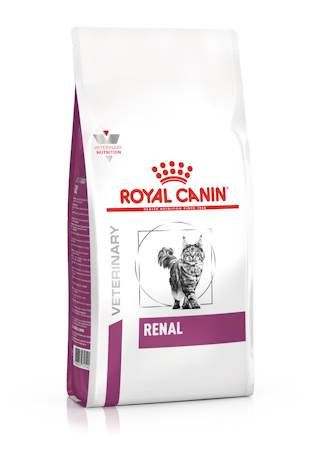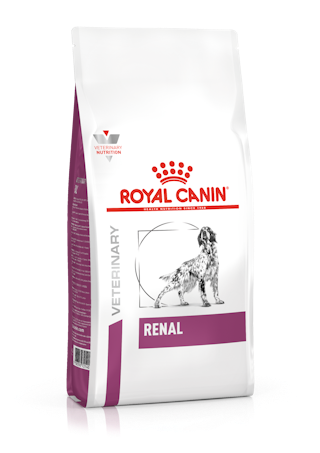This article is going to reveal:
【Click and jump to specific section】
High salt and sodium intake in human diets can cause negative effects to our health, increasing the risk of conditions such as high blood pressure, heart disease, or stroke. This has led to a common belief that 'salty equals unhealthy.' For the well-being of our furry companion, pet owners have become increasingly vigilant about monitoring their sodium consumption. Some even taste the pet food to examine whether it would be too salty for their pets.
But is it true that salty-tasting pet food equals unhealthy? And that our pets enjoy the food because of the saltiness? Will excessive sodium content in a pet diet directly cause kidney diseases? Dr. Tsai, the Veterinarian in Chief from Nicolas Animal Hospital will show you the truth about sodium in pet diet.
Truth no 1.
Does salty-tasting pet food exceed the food safety standards? Check the sodium content on the nutrition label!
Salt is one of the essential sources of minerals in a balanced diet, and an adequate sodium intake is crucial for maintaining pets' normal physiological functions. If they do not obtain an appropriate amount of sodium from their daily diet, it could potentially lead to other health issues.
Therefore, the fastest and most reliable way is to check whether the salt level meets international nutritional standards suggested by authoritative organizations such as AAFCO (The Association of American Feed Control Officials), FEDIAF (The European Pet Food Industry Federation) and NRC (National Research Council), etc. According to FEDIAF, the upper limit for sodium content in pet diets for both adult dogs and adult cats is 15g/kg.
At Royal Canin, every ingredient in the pet diet is meticulously formulated to meet the unique nutritional needs of cats and dogs. The sodium content typically ranges from 0.3% to 1.2%, falling well within the safe range defined by international nutritional standards. Following not only AAFCO and FEDIAF standards, Royal Canin also adheres to the nutritional requirements set by NRC. Pet owners can comfortably select suitable diets from Royal Canin for their beloved cats and dogs.
 |
Dr. Tsai: To tell whether the pet food is too salty, it is always more reliable to check the sodium content on the nutrition label, as well as their international certifications. Never define simply based on human’s subjective standards on healthiness, which is not applicable to pet food at all. |
Truth no 2.
Do pets enjoy their food for its saltiness? It is all about the aroma!
Humans enjoy strong tastes, and sometimes put health concerns aside just for the excitements of our taste buds. Some pet owners feed their pets with the same concept, believing that their pets enjoy a particular food because of the salty flavour. In fact, unlike humans, pets are not that compassionate to strong tastes.
Cats and dogs define gourmets not based on the taste, but the aroma. That is why saltiness does not cause a major effect on palatability. To our furry friends, the whole package of pet food, including aroma, texture, kibble size and the nutrition content as a whole, are the essential elements in a pet diet.
The main reason why saltiness is not that attractive to cats and dogs compared to humans, is the difference in the number of taste buds we have. According to studies, while humans have approximately 9,000 taste buds, dogs only have around 1,700 [1] and cats have even less, only about 500. [2]
According to the American Kennel Club, dogs are less sensitive to salty flavour when compared to humans because during the process of evolution, they are able to obtain enough sodium from meat to maintain their well-being, not having the needs to get from extra sources. As a result, the function of their taste buds has become less important. [3]
What makes it more interesting is that dogs can actually identify various flavours like humans do, including sweet, sour, salty and bitter. Their receptors locate at the tip of their tongue can even identify water. While water tastes flat and tasteless to humans, it probably has a special taste to dogs. [4]
 |
Dr. Tsai: Quite a lot of pet owners would do taste tests for their pets, and that is actually unnecessary. Humans taste buds are relatively sensitive, and would easily project freshness as saltiness, misjudging that the pet food is way too salty. |
Truth no 3.
Stereotypes regarding salt intake and pet diseases.
Excessive saltiness and high sodium diet can bring negative impacts to the heart, kidneys, and even the nervous system. This is particularly important to monitor the daily sodium consumption for our furry companions who have a history of heart or kidney-related issues.
However, sodium is not that horrible as some might think. Certain misconceptions have led to the belief that salt can cause various commonly seen diseases in cats and dogs. Let the professional vet debunk these myths for you.
(1)Shedding:The sodium in pet food does not directly cause shedding! Factors contributing to abnormal shedding in cats and dogs include food allergies, hormonal issues, environmental factors and parasites, etc. All these do not have a direct relation to sodium.
(2)Tear stains:Sodium in pet food does not directly cause tear stains in cats and dogs! If you notice that tear stains are starting to develop, it is generally related to their breed, environmental irritants, tear ducts blockage, and more... When you find tear stains, it is best to consult your vet promptly for an evaluation.
 |
Dr. Tsai: To prevent tear stains, it is important to maintain good hygiene. Keep the fur around the eyes neatly trimmed to avoid dirt. Pet owners can use a cotton cloth dampened with warm water or eye cleansing gel to gently wipe the area around the eyes.[5] |
Every pet owner is devoted to providing the happiest life for their furry friends. However, it is crucial to adjust the sodium content according to individual needs. Additionally, recognizing the differences between humans and pet taste is essential. By avoiding misconceptions and pitfalls, you can create a healthy and joyful life for your pets.
|About Dr. Tsai
|
 |







